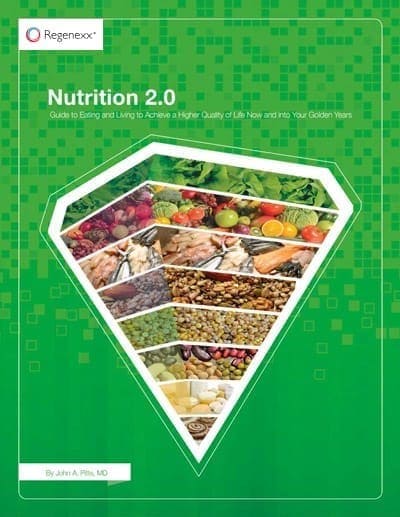Forget Fasting, A Little Calorie Restriction May Be Just as Good

Credit: Shutterstock
One of the hottest topics of the last decade has been Fasting. It’s been touted as a bit of a miracle cure for everything from Diabetes to improving stem cell health. The problem? Most people can’t keep it up for very long. Could there be a much easier way to get the same benefits but for the long haul? The answer is yes, according to a new two-year study of Calorie Restriction.
Fasting
These days, Fasting comes in lots of flavors. There’s the good old fashion eat nothing for a long time type. There’s “intermittent” Fasting which is intermittently eating nothing. Then there’s FMD (Fasting Mimicking Diet) where calories are dropped severely to around 500-800/day, but not to zero. Finally, there’s time-restricted eating, meaning you eat nothing for an extended time window and eat normally outside of that window.
The good news is that all of these seem to do great things for your health (2). Benefits include better lab values, less Diabetes, and even better arthritis pain. However, there’s a catch. Most people can’t keep this type of calorie restriction up for long periods. Hence, most get a short-term benefit without a long-term gain in health as they gain back the pounds.
Is There a Much Easier and Better Way to Get the Same Effect?
Researchers at Yale, Duke, Washington University, and Tufts were a bit skeptical of the benefits provided by severe Calorie Restriction. Meaning reducing calories by 40% in rodents does supercharge many systems, but also reduces growth, reproduction, and immunity. Hence, they asked the question of what would 25% accomplish in humans? Hence, they performed a two-year study.
The new study used data gathered by CALERIE 2 (Comprehensive Assessment of the Long-Term Effects of Reducing Intake of Energy), the longest-running Calorie Restriction trial in humans. The authors found that the study participants achieved a Calorie Restriction of around 14% over two years. In this group, the subjects generated more T-cells, which play a key role in immune function and slowing the aging process. Why is this important? Because T-cells form the primary immune defense from infections and cancer.
The investigators also found that the subjects could more easily burn fat stores as energy. This is critical as when people lose this ability, the fat builds up around organs leading to insulin resistance, type 2 Diabetes, and aging. In addition, age-related inflammation was reduced. This happened by decreasing the levels of PLA2G7. The researchers of course postulate that one day a drug could be devised to do the same thing, but of course, there’s a much simpler way to do this right now.
Extending Your Health Span by Skipping Frappucinos
Americans love their calorie and sugar-filled sweet drinks at Starbucks. A Venti Frappuccino has 310 calories. A Java Chip Frappuccino has 80 grams of sugar and 560 calories. That’s more than the amount of sugar in two cans of Coke. The average American consumes a whopping 3600 calories a day. So getting rid of one or two of these sweet coffee drinks would be about a 15% reduction in calories. Another easy way to do this is to switch all sweet and carb-loaded drinks to water. Meaning no orange juice, milk, or sodas. Yet another way to do this is to skip beer and wine during the week.
The overarching goal here is not only to get rid of about 15% of the calories but also all of the carb-loaded stuff. Why? We know this reduces the chance of you becoming a Type 2 Diabetic and we know this reduces age-related problems (3). Meaning no bread, pasta, or sweets. This involves reading food labels. If something has more than 10g of sugar in it per serving, you need to avoid that! Heck, just following that diet alone may cut 15% of your calories out.
How Do I Know I’m Hitting The Study Targets?
The goal of this intervention can be easily tracked when you have extra pounds to lose. Meaning this should take you down to your high school weight over 6-12 months. Simply get a scale and graph your weight. If you’re getting rid of the sweets and consuming less, you should lose about 1/2 to 1 pound a week to a pound a month. If you have more to lose, the pounds will come off faster, if you have fewer, they will obviously come off more slowly.
Calorie Apps
There are a number of easy-to-use calorie counting apps. Noom and MyFitnessPal seem to be the most popular based on an online search. They even come loaded with the menus from various chain restaurants, making to easy to do this when you’re eating out or getting delivery. Just track where you are now and then reduce that by 15%. These apps also show you how much sugar you’re consuming. Realize that if you’re wildly overeating for your activity level you may need to reduce by more than 15% or you may want to increase your activity level.
Will This Help My Orthobiologic Procedure?
While we have no direct evidence or clinical studies that look at the outcomes of PRP or stem cell based procedures with and without a diet, the circumstantial evidence that improving your blood sugar control and reducing calories produces better healing is strong (4). Hence, to review, these are the things I would do before a procedure:
- Try to lose the extra pounds
- Get your blood sugar under control by getting rid of high-glycemic carbs and sweets
- Improve your activity (if possible)
- Reduce calories by 15%
Is there a manual I can read to see how I should be eating? Sure, Dr. Pitts wrote a great book on that topic:
The upshot? This new data is pretty fascinating. A simple 15% reduction in calories may be all we need to improve our healthspan. However, that should also be combined with dumping the excess carbs and sweets!
___________________________________________
(1) Spadaro O, Youm Y, Shchukina I, Ryu S, Sidorov S, Ravussin A, Nguyen K, Aladyeva E, Predeus AN, Smith SR, Ravussin E, Galban C, Artyomov MN, Dixit VD. Caloric restriction in humans reveals immunometabolic regulators of health span. Science. 2022 Feb 11;375(6581):671-677. doi: 10.1126/science.abg7292. Epub 2022 Feb 10. PMID: 35143297.
(2) Venetsanopoulou AI, Voulgari PV, Drosos AA. Fasting mimicking diets: A literature review of their impact on inflammatory arthritis. Mediterr J Rheumatol. 2020;30(4):201-206. Published 2020 Mar 31. doi:10.31138/mjr.30.4.201
(3) Kumar R, Looi JC, Raphael B. Type 2 diabetes mellitus, cognition and brain in aging: A brief review. Indian J Psychiatry. 2009;51 Suppl 1(Suppl1):S35-S38.
(4) Kadharusman MM, Antarianto RD, Hardiany NS. A Review of the Impact of Calorie Restriction on Stem Cell Potency. Malays J Med Sci. 2021;28(4):5-13. doi:10.21315/mjms2021.28.4.2

NOTE: This blog post provides general information to help the reader better understand regenerative medicine, musculoskeletal health, and related subjects. All content provided in this blog, website, or any linked materials, including text, graphics, images, patient profiles, outcomes, and information, are not intended and should not be considered or used as a substitute for medical advice, diagnosis, or treatment. Please always consult with a professional and certified healthcare provider to discuss if a treatment is right for you.

